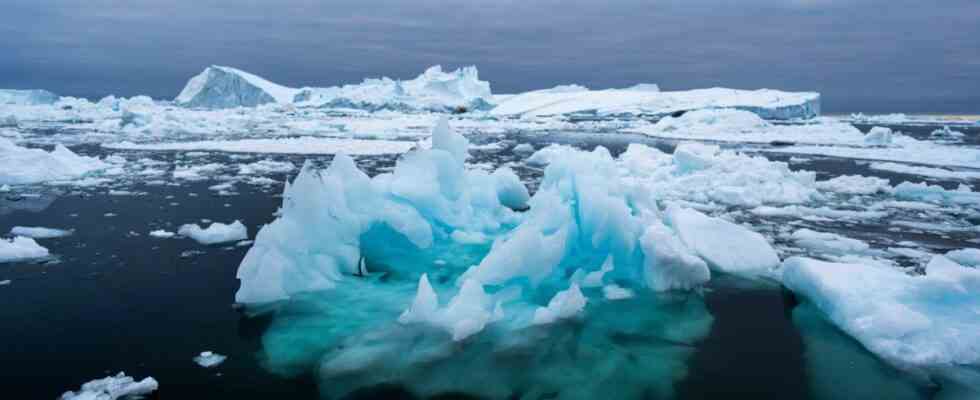Even if greenhouse gas emissions were stopped immediately, the melting of the Greenland ice sheet would cause global sea levels to rise by at least 27 centimeters. This is the result of a study that is not based on calculations with computer models, but uses measurements from the years 2000 to 2019 as a basis. The group led by Jason Box from the Geological Survey of Denmark and Greenland in Copenhagen their results in the journal NatureClimate Change released.
The researchers explain that model calculations cannot be used to predict exactly what will happen to the Greenland ice sheet in the course of global warming. They therefore also pursued an approach in which the amount of ice, which has become unstable due to global warming in recent years, is determined by measurements on site and by satellite.
Specifically, they determined the snowfall limit for all glaciers: where there is snow on the ice in summer that reflects sunlight well, the ice is in balance. Conversely, where the bare ice can be seen, which appears much darker, the summer melt is greater than the snow gain in winter, and the ice is imbalanced. This ice will melt even if the earth stops warming. Box and colleagues determined the proportion of this ice to be 3.3 percent of the total ice mass. That corresponds to 110,000 cubic kilometers of ice and a global sea level rise of around 27 centimeters.
Most of the melting is likely to take place before the end of this century
In order to get to the data, one had to ignore the time factor, explains Box. “But our observations suggest that most of the sea-level rise caused will occur in this century.” Furthermore, the measurements show that the ice losses are unevenly distributed, that they are significantly greater in the south and west of the island than in the east and north. The scientists write that these differences are not represented well enough in computer models.
Jason Box takes ice samples during the melting season in West Greenland.
(Photo: The Geological Survey of Denmark and Greenland/GEUS)
The 27 centimeters are only a minimum assumption. “Realistically, that number will more than double this century,” Box said. To get an idea of how the ice sheet might evolve in the future, without using a computer model, the researchers did the following: they took the 2012 data, which showed the highest rate of melt recorded to date, and assumed that this conditions will continue. In this case, the melting of the Greenland ice sheet would result in a sea level rise of more than 78 centimeters.
The researchers cite the loss of floating ice shelves, an acceleration of internal ice movement due to increased melting and more precipitation as examples of more recent processes that are driving a rapid response in the ice sheet.
The Greenland ice sheet covers a good four-fifths of the total area of the world’s largest island. It is about five times the size of Germany. Only the Antarctic ice sheet is larger. The island is particularly hard hit by climate change, as the Arctic has already warmed significantly more than any other region on earth.
The Greenland ice sheet is currently the main contributor to sea level rise. Its melting has already caused around 1.2 centimeters of global sea level rise within almost 20 years, as the Danish Polar Portal announced in February. Since the start of corresponding measurements in April 2002, the Greenland ice sheet has lost around 4700 billion tons of ice – that is enough to put the entire USA half a meter under water.

